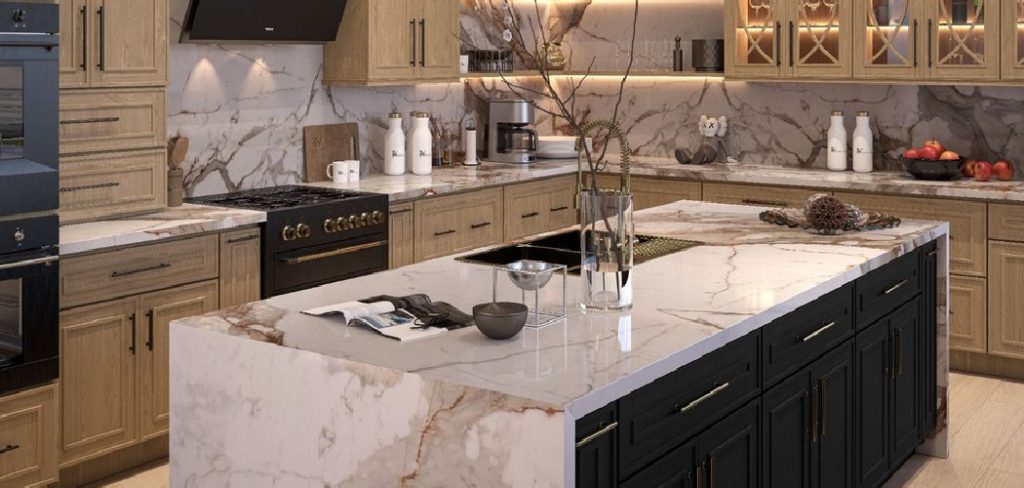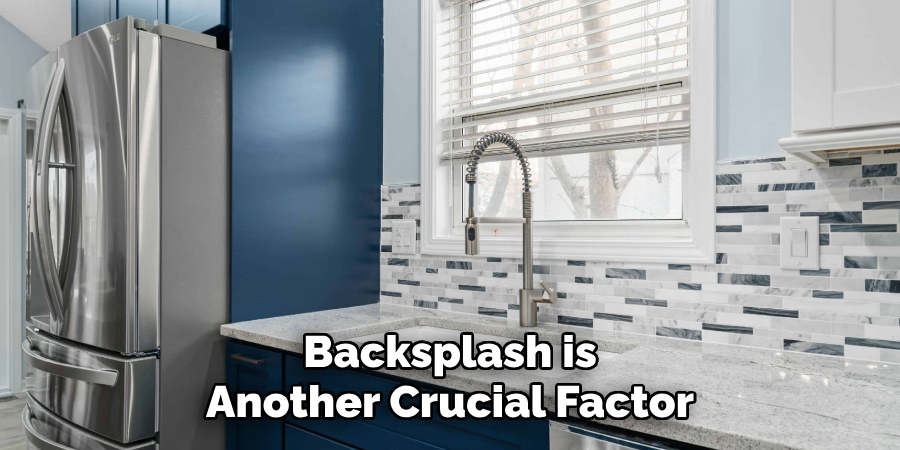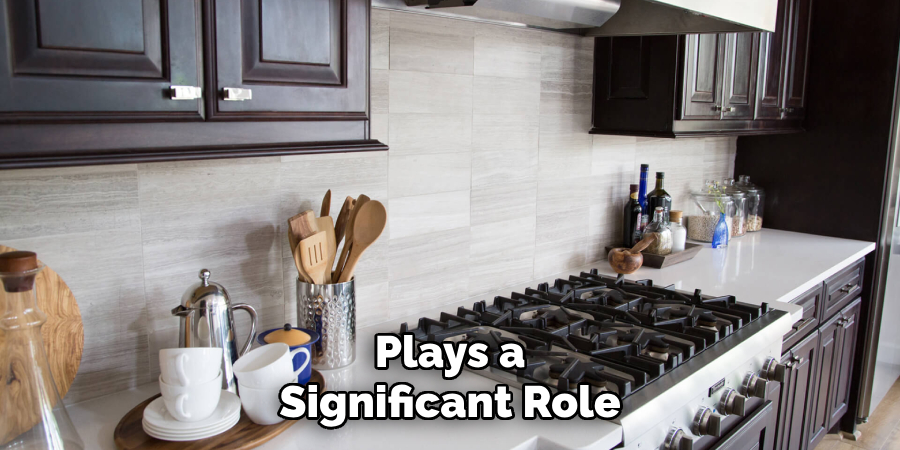Are you planning on renovating your kitchen and need help picking out the perfect backsplash to match your countertop? Look no further! This guide will discuss tips and tricks for selecting a backsplash that complements your countertop.

How to pick backsplash to match countertop is an essential step in creating a cohesive and visually appealing kitchen or bathroom design. The interplay between these two elements sets the tone for the space’s overall aesthetic, whether you’re aiming for a bold, modern look or a subtle, classic feel. With countless materials, colors, and patterns available, finding the perfect match can feel overwhelming.
However, by considering factors like color harmony, texture coordination, and style consistency, you can ensure that your backsplash enhances the beauty and functionality of your countertop while reflecting your taste.
What Are the Benefits of Matching Your Backsplash and Countertop?
There are several benefits to picking a backsplash that complements your countertop.
- First, it creates a cohesive look in your space. When both elements coordinate well together, they make a visually appealing and harmonious overall design.
- Second, matching the two can make your countertop stand out. By choosing complementary colors or patterns for your backsplash, you can draw attention to your countertop as the room’s focal point.
- Lastly, selecting a coordinated backsplash and countertop combination can increase the value of your home. A well-designed kitchen or bathroom with complementary materials and finishes is attractive to potential buyers.
What Will You Need?
Before you begin selecting a backsplash, gathering all the necessary information and materials is essential to make an informed decision. Here are some items you’ll need:
- Samples: Gather samples of your countertop material, cabinet color, and any other elements in the room that you want to coordinate with.
- Measurements: Measure the space where you plan to install the backsplash. This will help determine how much material is needed.
- Color Swatches: Bring color swatches of your desired paint colors or fabric for reference.
- Inspiration Photos: Collect pictures from magazines or online sources that showcase backsplash and countertop combinations that appeal to you. These can serve as a reference and inspiration during the decision-making process.
8 Easy Steps on How to Pick Backsplash to Match Countertop
Step 1: Assess Your Countertop
Begin by closely examining your countertop’s color, pattern, and texture. Is it bold, busy with intricate patterns, or more neutral and understated? This will play a significant role in determining the type of backsplash that complements it.

For countertops with dramatic veining or patterns, consider a more straightforward backsplash design that won’t compete for attention. Conversely, a plain countertop may benefit from a more decorative or textured backsplash to add visual interest.
Step 2: Determine Your Color Palette
Choose a color palette that harmonizes with your countertop and overall kitchen design. Look for hues already in your countertop, cabinets, or surrounding décor. This will ensure a cohesive look. If your countertop features multiple colors, consider selecting one of the subtle shades to highlight in your backsplash. For a timeless and versatile option, neutral tones like white, beige, or gray often pair well with various countertop styles.
Step 3: Consider the Material
The material of your backsplash is another crucial factor to think about. Popular options include ceramic tiles, glass, metal, natural stone, or peel-and-stick alternatives. Each material offers distinct advantages—ceramic tiles are durable and cost-effective, glass adds a sleek, modern touch, and natural stone can create a luxurious, textured look.

Consider how the material will perform in maintenance and durability, particularly in high-use areas like behind the stove or sink. Balancing aesthetics with practicality will help ensure your backsplash is both functional and beautiful.
Step 4: Decide on a Pattern or Layout
The pattern or layout of your backsplash can significantly influence your kitchen’s overall look and feel. Traditional layouts like subway tiles arranged in a brick pattern create a classic and clean aesthetic, while more intricate patterns such as herringbone or chevron can add visual interest and a touch of sophistication. Consider geometric designs or mosaic tiles with colorful accents for a bold statement. It’s important to visualize how these layouts will complement the rest of your kitchen design and whether they align with your personal style. Mocking up a sample section on your wall can help you make a confident decision.
Step 5: Consider Grout Color and Application
Grout might seem like a minor detail, but it plays a significant role in your backsplash’s overall appearance and durability. A contrasting grout color can highlight the shape and pattern of your tiles, making them stand out as a design feature.

On the other hand, a grout color that blends with your tiles creates a seamless and cohesive look. Beyond aesthetic considerations, choosing a high-quality, stain-resistant grout will ensure more manageable maintenance and long-lasting performance. Follow the manufacturer’s instructions for proper application to achieve a clean and professional finish.
Step 6: Seal and Protect Your Backsplash
Sealing your backsplash is crucial to preserving its beauty and functionality. Many types of tiles, especially natural stone, are porous and can absorb stains or moisture without proper sealing. Applying a high-quality sealant helps to protect the tiles and grout from spills, grease, and everyday wear and tear. Be sure to select a sealant compatible with your tile material and follow the instructions for application, including allowing adequate drying time. Regular resealing, depending on usage, will keep your backsplash looking fresh and vibrant for years to come.
Step 7: Clean and Maintain Your Backsplash
Regular cleaning and maintenance are essential to ensure your backsplash’s longevity and pristine appearance. Use a mild, non-abrasive cleaner to wipe down the tiles and grout, avoiding harsh chemicals that could damage the sealant or tile surface. A mixture of warm water and a small amount of dish soap typically works well for tougher stains. Periodically check the grout lines and sealant for signs of wear, and address any issues promptly to prevent further damage. Keeping your backsplash clean and well-maintained will preserve its beauty and functionality.
Step 8: Enjoy Your Finished Backsplash
With your backsplash installed, sealed, and maintained, it’s time to enjoy the transformation it brings to your space. A well-crafted backsplash can serve as a stunning focal point, enhancing the overall aesthetic of your kitchen or bathroom while providing practical protection for your walls. Take pride in your hard work and admire the blend of style and utility your new backsplash adds to your home.

By following these ten easy steps, you can confidently select a backsplash that beautifully complements your countertop and adds personality to your space.
5 Things You Should Avoid
1. Ignoring the Overall Color Scheme: Avoid selecting a backsplash that clashes with the color scheme of your kitchen. Ensure that the colors complement the countertop and the cabinets for a cohesive look.
2. Choosing Overly Busy Patterns: While bold patterns can make a statement, overly complicated designs might overwhelm the space. Opt for a balance that enhances, rather than detracts from, your countertop’s aesthetic.
3. Overlooking Texture and Finish: Don’t forget to consider the backsplash and countertop’s texture and finish. A high-gloss backsplash might clash with a matte countertop, affecting the visual flow.
4. Not Considering Lighting: Poor lighting can alter the appearance of your backsplash. Avoid selecting a backsplash without seeing how it looks under your kitchen’s lighting conditions, both natural and artificial.
5. Following Trends Blindly: Trends can be tempting but don’t always reflect your style or long-term preferences. Avoid choosing a trendy backsplash that may become outdated quickly or doesn’t suit your overall design vision.
By avoiding these common mistakes, you can ensure that your backsplash adds to the overall aesthetic of your kitchen and creates a cohesive look.
Should Backsplash Be Lighter or Darker Than Countertops?
When considering the color of your backsplash concerning your countertops, there is no hard and fast rule about whether it should be lighter or darker. It ultimately depends on your preference and the overall look you are trying to achieve. However, here are some tips to help guide your decision:
- Lighter backsplashes can create a sense of spaciousness and brightness in smaller kitchens.
- Darker backsplashes can add depth and drama to larger kitchens.
- Consider using the same material for the countertop and backsplash for a cohesive and seamless look. This can work well with both light and dark colors.
Ultimately, the most crucial factor is choosing a color scheme you love that complements your kitchen’s overall design. Don’t be afraid to experiment with different colors and patterns to find the perfect combination for your space.
Conclusion
When choosing a backsplash to match your countertop, it’s essential to balance functionality and aesthetics.
Evaluate the size and lighting of your kitchen and the atmosphere you want to create. Light backsplashes can make a space feel open and bright, while darker backsplashes bring sophistication and contrast. Consider textures and materials that complement your countertop, whether it’s through matching tones or adding visual interest with contrasting patterns.
Hopefully, the article on how to pick backsplash to match countertop has provided you with helpful tips and insights to make the best decision for your kitchen.
Professional Focus
Angela Ervin, a former interior designer turned blogger, specializes in kitchen design and renovations. Through her website, she blends her passion for cooking with design expertise, sharing practical and creative ideas. Known for balancing functionality and beauty, Angela’s insightful content has made her a trusted voice in home design and lifestyle.
About the Author
Angela Ervin, an experienced interior designer and blogger, combines her passion for kitchen renovations with storytelling. Living in Petersburg with her family, she enjoys cooking and testing her projects firsthand. Known for her humor and relatable style, Angela shares creative, functional design insights through her content, making her a trusted voice in home design.
Education History
University: Virginia Commonwealth University
Degree: Bachelor of Fine Arts (BFA) in Interior Design
- Angela’s education at VCU focused on mastering core interior design principles, including spatial planning, color theory, materials selection, and sustainable design practices.
- She gained hands-on experience through studio projects and collaborative design exercises, which honed her ability to create functional and aesthetically pleasing environments.
- Her coursework also emphasized problem-solving and practical applications of design, preparing her for real-world projects like her self-directed kitchen renovations.
- The program’s strong foundation in both technical skills and creative expression shaped Angela’s ability to seamlessly integrate form and function in her work.
